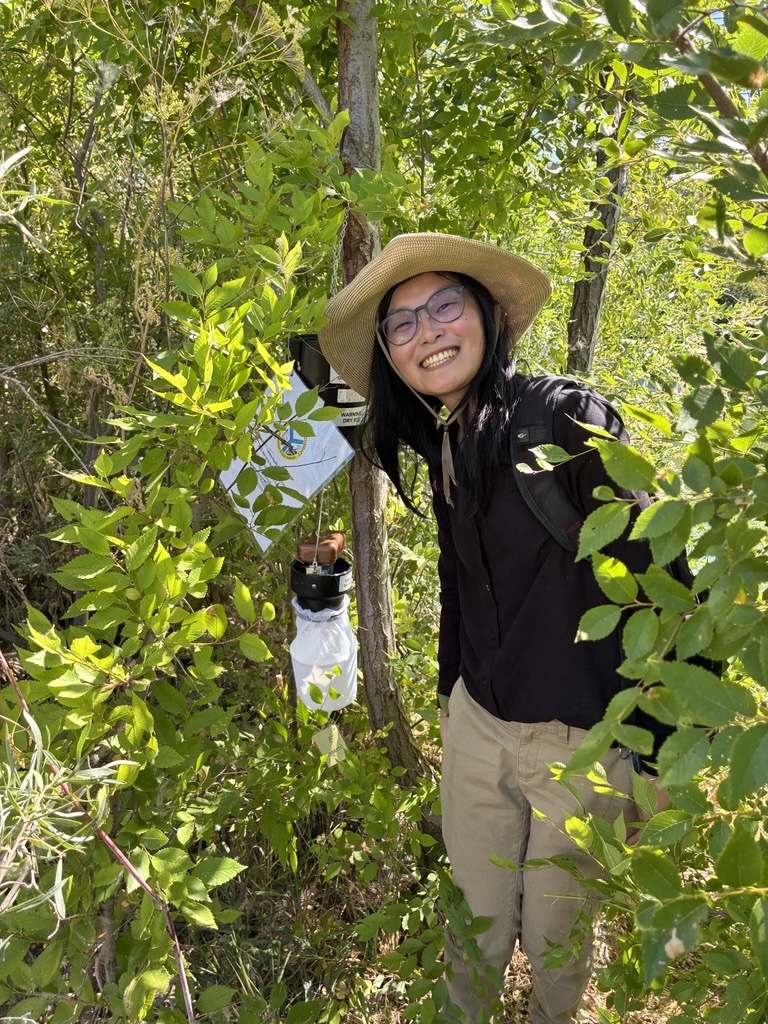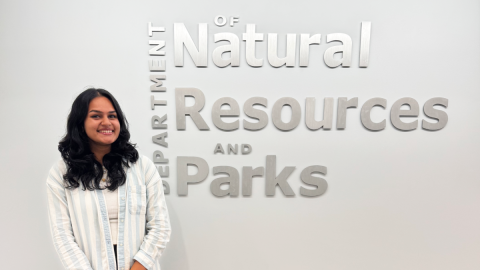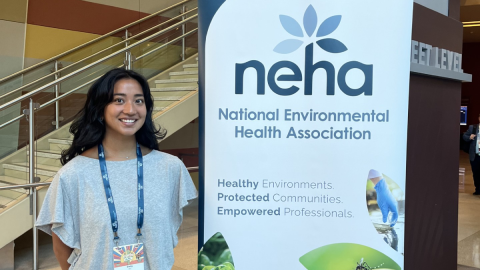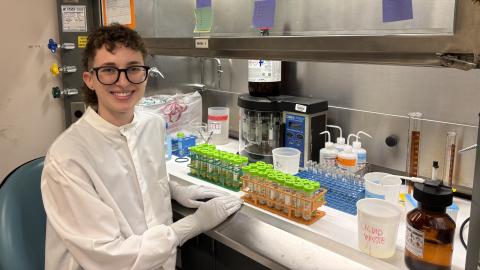
Sophia Li
BS, Environmental Public Health
Hometown
Sammamish, WA
Internship with
Yakima Health District Environmental Health Division
Editor’s note: This summer, DEOHS students have been getting hands-on experience as interns with health agencies, nonprofits and private companies. In our occasional “On the Job” series, we feature some of their stories.
Most people spend their summers avoiding mosquitoes. But when Sophia Li heard about an opportunity to trap and test the pests for West Nile virus as part of an internship with the Yakima Health District, she was all in.
As a pre-veterinary student at the UW, Li has been fascinated by how diseases can jump back and forth between animals and humans since high school. She is working in Union Gap, Washington, this summer through a Jack Hatlen Scholarship, a program designed to employ students in rural health districts in Washington state.
“It’s satisfying to understand how pieces of human, animal and environmental health intersect,” she said — a concept called One Health. “The mosquito traps are set along the Yakima River where there are bird migration paths, people routinely fish, and mosquitoes are abundant.”
In the case of West Nile, mosquitoes are infected with the virus by biting birds, and later transmit it to humans by biting them. After trapping the mosquitoes, Li sends them to the Washington State Department of Health for analysis.
“Trapping my first mosquitoes and getting results from testing was super exciting,” she said. Her efforts caught the first case of West Nile virus in a mosquito sample in Washington this year, and she helped create a press release for the community about it.

A One Health approach
As an Environmental Public Health major in the UW Department of Environmental & Occupational Health Sciences (DEOHS), Li has pursued her interest in One Health by taking a class on zoonotic diseases with Assistant Teaching Professor Emily Hovis and volunteering at the Center for One Health Research, part of DEOHS.
Through her internship, she has applied what she’s learned so far and gone deeper.
For example, she is monitoring 17 bodies of water in Yakima County for harmful algal blooms, which can threaten local pets and wildlife. In previous years, dogs in the Tri-Cities area have died after ingesting toxic algae from rivers and lakes.
To assess risk levels for the blooms, she’s combining the water testing results with chlorophyll levels derived from satellite data from the U.S. Geological Survey. She recently presented her results to her team in the Environmental Health division at the health district.
Connecting with the community
She’s also sharpening her communication skills. She has created posters for local audiences on how to keep livestock safe from algae in English and Spanish, helped translate in Spanish and Mandarin, and visited Yakima Valley College to talked with high school students about to graduate about opportunities to get certified in food safety.
.jpg)
“We're helping to build trust with the community, and trying to break down language barriers to accessing public health information and health services,” she said.
The importance of rural health
Li has been inspired by the passion of her coworkers in the small Environmental Health Division, where everyone plays multiple roles, from food inspections at restaurants to assessing septic systems and solid waste.
This summer, she has experienced many of these jobs and more — including sending an animal head from a veterinary hospital out for rabies testing and attending a health board meeting where she found it eye-opening to hear about local measles outbreaks and tuberculosis cases.
“I've seen a lot of barriers that rural health faces, in terms of health disparities and access to resources,” she said. “Helping the communities in rural areas is super important because there is a big need.”




